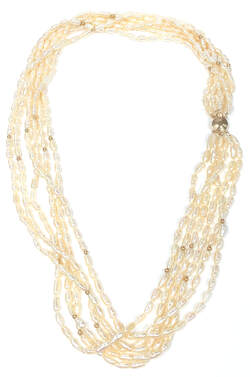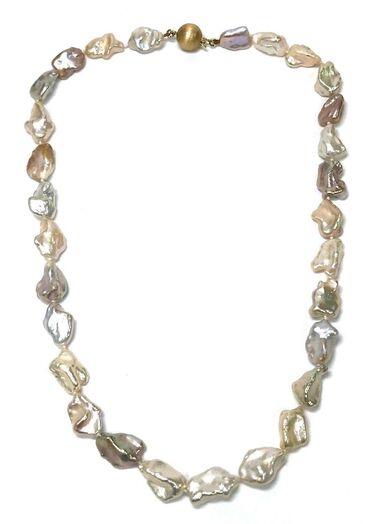KESHI PEARL
|
Species: Cultured Pearl
Pearl Type: Keshi (Non-nucleated) Mollusk: (Various mollusks and mussels) Mohs Hardness: 2.5 to 4.5 out of 10 Color: White to shades of yellow, pink, green, blue and gray RI: 1.350 to 1.685 (+0.009 / -0.005) Birefringence: 0.155 (use birefringence blink method) SR/DR/AGG: Too opaque to test Spectrum: Not diagnostic Fluorescence: Varies. Inert to strong light blue, yellow, green or pink under LW and SW. SG: 2.61 |




